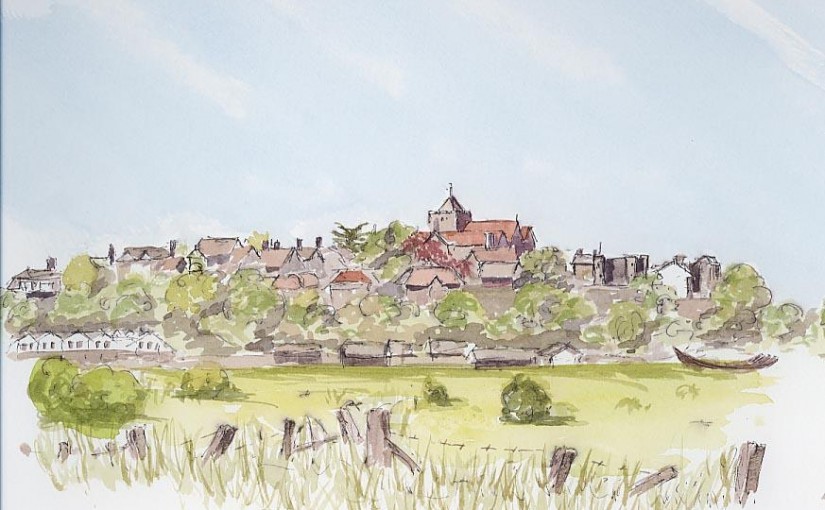The Town on the Hill
Rye – built on a sandstone rock rising out of the Romney Marsh, surely one of the most beautiful towns in Britain. A living example of the way things were.
Rye is, in great part, much the same as it has always been, a unique but fragile place where it’s inhabitants have fought bravely though the centuries to protect their “Jewel in the Crown” as Elizabeth 1 once described it, from a variety of enemies and greedy men who would have destroyed it in one way or another if they had their way.
A French raiding party once burned many buildings of the town and stole the bells from the Church. The men of Rye returned the compliment the following year, raiding St. Peter’s Port, burning the boats at their moorings, even dragging them around the streets in flames. They did much damage before bringing the precious bells back home.
The Armada was destroyed in the Channel by Drake, only one ship from Rye was involved but legend has it that the oak from Spanish Galleons washed up at Winchelsea and Camber was used in the building of the fine Tudor houses that stand in the citadel to this day.
Smuggling led to much corruption in the town, some, we are led to believe, involving prominent men of the town. The notorious ‘Hawkhurst Gang’ thought they were immune from law and order, even sitting in the Mermaid Inn with revolvers on the table while they partook of refreshment. They went too far, threatening innocent members of the public. Eventually the people of the town, who had protected them from the Revenue Service, cried enough and the gang were run out of town, eventually being caught by the Customs men and hanged.
The French threatened again – this time a Castle was constructed between the two Ancient Towns of Rye & Winchelsea and a man made moat, the Military Canal was dug between Rye and Hythe. Martello Towers were constructed along the Southern Coast, examples can be seen at the east end of New Winchelsea Road and at Rye Harbour.
The Channel was all that was needed and the 100 years war continued without one Frenchman getting a foot on English soil.
Then came the terrible “War to end all Wars” and now the French were our allies against the Kaiser’s armies. Many Ryers went to war across the Channel. Rye Football Team enlisted together, so did members of other clubs from the town. So many did not return but they had fought for Rye on foreign soil.
Hitler came along and Rye was in the front line in 1940. The Battle of Britain raged overhead and vast armies were gathering on the French coast just over the horizon. Rye Home Guard stood ready to face the Hun on their own doorstep. They were prepared to lay down their lives to protect their town. Fortunately the young airmen in their Spitfires and Hurricanes outfought the might of the Luftwaffe and Hitler was forced to abandon his invasion plans.
Today Rye’s greatest enemy are property developers who would like to cash in on the town’s unique situation. If they are not curbed they will in-fill every open space until Rye becomes swamped and ruined. They will use the Old Lion Street School and the Ferry Road School Site if they get half a chance.
Another enemy are the convoys of heavy lorries passing through South Undercliff vibrating the very foundations of the sandstone rock on which Rye is built. Every passing lorry loosens the cliff a little more as can be seen by the small landslides that threaten the road below. How long will it be before a major slide leaves a section of the cliff on the road?
Restrictions should be put on heavy traffic before such a disaster occurs. Now is the time for the men and women of Rye Council to call a halt.
Rye’s Own July 2003
All articles, photographs and drawings on this web site are World Copyright Protected. No reproduction for publication without prior arrangement. © World Copyright 2015 Cinque Ports Magazines Rye Ltd., Guinea Hall Lodge Sellindge TN25 6EG
